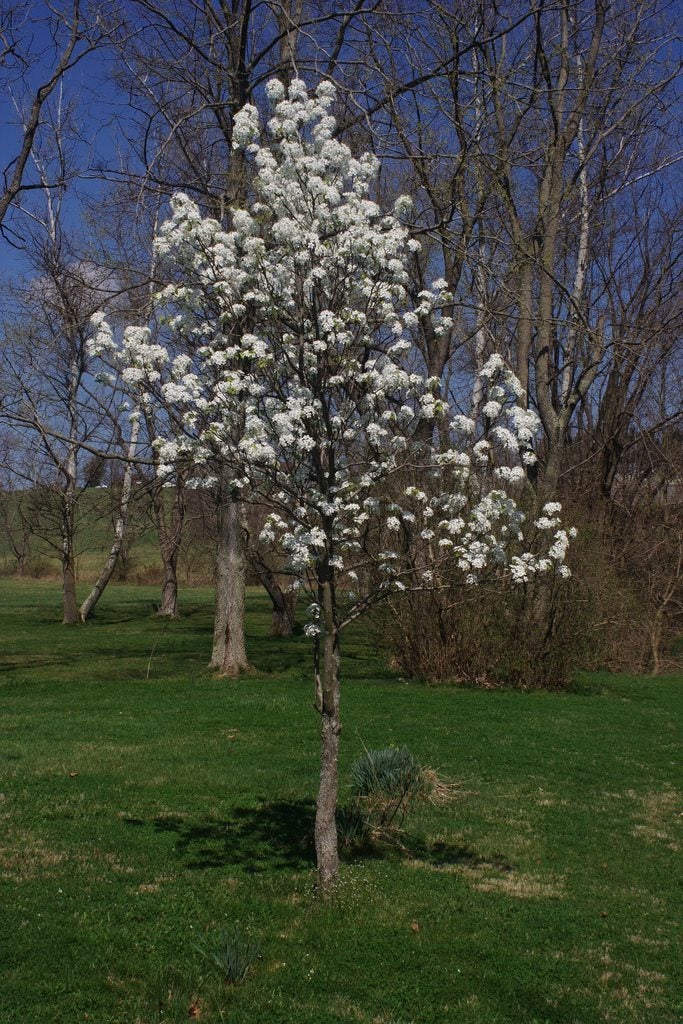Autumn Blaze Pear Trees – Tips On Caring For Autumn Blaze Pears


Autumn Blaze pear trees may not produce edible fruits, but they are truly ornamental gems. They have a beautiful rounded, spreading habit. In addition, they offer showy flowers in spring, glossy dark green leaves in summer, and exceptional autumn color. For more Autumn Blaze information, including tips on how to care for an Autumn Blaze pear, read on.
Autumn Blaze Tree Attributes
Whether you want a shade tree, spring blossoms, or a stunning fall display, Autumn Blaze pear trees (Pyrus calleryana 'Autumn Blaze') will provide. This is a cultivar of the Callery pear and shares its best characteristics. These trees overflow with frothy white flowers in early spring. Their dark leaves provide ample shade in summer before turning brilliant crimson in autumn. These Autumn Blaze tree attributes can also be found in the species plant. The Callery pear is also considered invasive in some areas. Autumn Blaze pear trees are much less aggressive. According to Autumn Blaze information, prior cultivars of the Callery pear required an early freeze to begin showing fall color. In mild areas like Oregon, they matured late, and the autumn display was lost. The Autumn Blaze cultivar was developed at Oregon State University in a quest to develop an early maturing, red-leafed Callery pear with better fall color. The task was successful, since Autumn Blaze tree attributes include the best fall color of all of the Callery cultivars.
Caring for Autumn Blaze Pears
If you are wondering how to care for an Autumn Blaze pear, first think about planting it appropriately. You’ll need to find a site large enough to accommodate the tree. At maturity Autumn Blaze grows to 40 feet (12 m.) tall and 30 feet (9 m.) wide. Caring for Autumn Blaze pears is easiest if you plant the tree in a full sun location. The trees require well-draining soil, but accepts sand, loam, or even clay. Autumn Blaze information suggests that these cultivars thrive in U.S. Department of Agriculture plant hardiness zones 4 through 7 or 8. Don’t worry about cold weather in these zones. Autumn Blaze is the hardiest cultivar of the Callery pear, hardy to -20 degrees F. (-29 C.). If you live in an area with windy weather, you’ll be happy to learn that its branches are more solid than most ornamental pear trees. That makes them more wind resistant.
Sign up for the Gardening Know How newsletter today and receive a free copy of our e-book "How to Grow Delicious Tomatoes".

Teo Spengler is a master gardener and a docent at the San Francisco Botanical Garden, where she hosts public tours. She has studied horticulture and written about nature, trees, plants, and gardening for more than two decades, following a career as an attorney and legal writer. Her extended family includes some 30 houseplants and hundreds of outdoor plants, including 250 trees, which are her main passion. Spengler currently splits her life between San Francisco and the French Basque Country, though she was raised in Alaska, giving her experience of gardening in a range of climates.